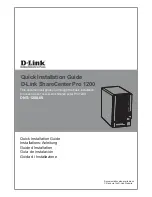
Chapter 4. Web Configuration & Operation
169
CHAPTER 3
WEB OPERATION & CONFIGURATION
Port Down-MEP:
All frames are transmitted untagged.
VLAN-based Down-MEP:
All frames are transmitted with a VLAN tag. In order for this to work, the following
manual VLAN configuration of the egress port is required:
The VLAN Port Mode must be Trunk or Hybrid in order to get frames tagged upon transmission.
The VLAN Port Type must be either of C-, S-, or S-Custom.
VLAN Egress Tagging must be set to either tag all or untag Port VLAN. In the latter case the chosen
VLAN ID for the profile must be different from the configured VLAN Port VLAN ID.
The port must be member of the chosen VLAN ID.
Whether one or the other type is selected, frames are generated as close to the egress port as possible (hence
the "Down-MEP" term) and therefore not sent through the queueing system, due to lack of integration with EVCs
in this version of the software.
When VLAN-based Down-MEP is selected, the VLAN tag's ID, PCP, and DEI values are selected with the
subsequent fields.
VLAN ID:
When Type is set to VLAN-based Down-MEP, this field determines the VLAN ID used in the tag. Valid values
are in the range 1 to 4095.
PCP:
When Type is set to VLAN-based Down-MEP, this field determines the PCP value used in the VLAN tag.
DEI:
When Type is set to VLAN-based Down-MEP, this field determines the DEI value used in the VLAN tag.
DMAC:
This field determines the destination MAC address used in generation of the Y.1731 TST and 1DM frames. The
source MAC address will automatically become the egress port's native MAC address. Note that it is important that
the remote end swaps DMAC and SMAC while looping the frame.
Frame Sizes:
Each sub-test is repeated for every selected frame size. At least one frame size must be checked. By
default, all but the jumbo frame size are selected.
Tests to Run:
One or more of the following sub-tests may be executed through the same profile.
Throughput:
The throughput test searches for the maximum rate at which at most a certain percentage of the
frames are lost. The throughput test starts at the maximum configured rate and uses a dichotomist algorithm
(binary search) to find the optimum rate. The trials continue until the difference between a failing and succeeding
rate is smaller than the configured accuracy.
Latency:
The latency test measures the round-trip time of frames leaving the near-end until they get back to the
near-end. Y.1731 TST frames are transmitted at the maximum rate determined by the throughput test less 200
Kbps. Every time, a Y.1731 1DM frame is transmitted and the time from this frame leaves the switch until it comes
back is measured. If more than two 1DM frames are transmitted during a trial, also the delay variation will be part
of the generated report. Selecting the latency test causes the throughput test to be selected automatically.
Frame Loss:
The frame loss test measures frame loss at configurable transmission rates. It starts at the
configured maximum rate and steps down by the configured step size and stops when two consecutive trials
have zero frame loss (test succeeded in that case) or the minimum rate is reached (test failed in that case). For
each trial, the report displays the frame loss ratio.
Back-to-Back:
The back-to-back test aims to measure the network's ability to absorb bursty traffic. The test runs
at line rate less 200 Kbps, and bursts of Y.1731 TST frames are generated a configurable number of times. The
duration of a burst is configured in milliseconds, and the time from one burst ends until the next starts is
configured through the Dwell Time.











































